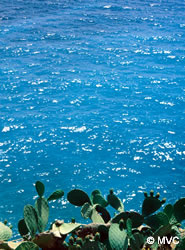Punta Entinas-Sabinar Natural Area
 |
|
The Coastline of Almeria |
Southwest of the coastal resort Roquetas del Mar is a 15km-long strip of protected coastline, the Punta Entinas-Sabinar Natural Area and Reserve. Like Albufera de Adra Natural Reserve along the coast, this is a wildlife haven encircled by a sea of plastic from the intensive agriculture that surrounds it. Even in the height of summer the beach is often deserted and its isolation makes it an ideal spot for birdwatching.
The 1,960ha natural area is made up of sand dunes, beach and the raised beach of Los Alcores, immediately north of Punta Entinas. The dunes are interspersed with a series of freshwater and saline lakes. Some of the latter lakes are abandoned salt pans, the Cerrillos-Salinas Viejas.
Declared a special protected zone for birds, more than 150 species have been recorded in this wetland part of the area, including waders, flamingos and the rare Audouin's gull.
To the west within the larger protected zone are 785ha in Punta Entinas that have been designated a natural reserve, which has a higher level of environmental protection.
Access
To get to Punta Sabinar you can either go to Roquetas and then take the road to Almerimar, passing the saltpans Cerrillos-Salinas Viejas before you get to Punta Sabinar. Or take the Almerimar turn-off from the A7 and then turn towards Las Norias. The AL9008 heads south from here to Punta Sabinar. There are two signposted trails within the area.
To get to Punta Entinas, take the exit from the A7 for Almerimar. Head to the east of the village and then walk along the beach.
There is no driveable track or road linking Punta Entinas and Punta Sabinar along the coast. The only way to reach both is to either drive inland or walk along the beach.
Flora
Coastal dunes back the beach and are colonised by Mediterranean scrubland plants like lentisc (also known as entina, hence the area's name), Phoenician junipers and joint pines.
On the inland side of the stabilised dunes look out for wild thyme (thymus hyemalis) and Almerian rock roses (helianthemum almeriense). On the seaward side is helichrysum stoechas. On the mobile dunes is marram grass (ammophila arenaria) and sand couch (elymus farctus).
Wetland areas are colonised by halophytic vegetation such as the saltwort sarcocornia fructicosa, glaucous glasswort (arthrocnemum macrostachyum) and frankenia corymbosa.
Fauna
The wetland area is noteworthy for its great variety of bird species. Autumn is a good time to visit, when many migrating birds stop off. Red-crested pochards, great cormorants, grey herons and avocets are among the great number of birds that congregate here in winter, along with thousands of gulls.
Around the wetlands is a stretch of steppe, where you can see birds typical of this habitat, such as black-bellied sandgrouse, stone curlews and little bustards. It's easy to spot waders in the mud flats on the lake shores, since these birds are numerous and include redshanks, sanderlings, little stints and dunlins.
In amongst the Mediterranean scrubland vegetation on the sand dunes are spine-footed, ocellated, Algerian sand and Spanish sand lizards and Montpellier snakes.
Villages
Almerimar and Roquetas de Mar are the two main settlements, close to the protected area.